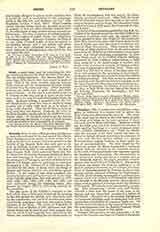

Crusade, BULL OF the, a Bull granting indulgences to those who took part in the wars against the infidels. These indulgences were similar to those which, as far back as the eleventh century, had been granted to the faithful of the Spanish Mark who took part in the work of building churches and monasteries, or who gave alms to be devoted to this purpose. The first of these Crusade Bulls which concerned Spain was that of Urban II to the Counts Berenguer Ramon de Barcelona and Armengal de Besalil in 1089 at the time of the reconquest of Tarragona, and that of Gelasius II to Alfonso I of Aragon, when he undertook to reconquer Saragossa in 1118. Clement IV in 1265 issued a general Bull for the whole of Spain, when the Kings of Aragon and Castile joined in the expedition against Murcia. In the course of time these pontifical concessions became more and more frequent; in the reign of the Catholic kings alone they were granted in 1478, 1479, 1481, 1482, 1485, 1494, 1503, and 1505, and were continued during the following reigns, that granted by Gregory XIII in 1573 being renewed by his successors.
The alms given by the faithful in response to this Bull, which were at first used exclusively for carrying on the war against the infidels, were afterwards used for the construction and repair of churches and other pious works; sometimes they were also used to defray expenses of the State. The Cortes of Valladolid of 1523 and that of Madrid of 1592 petitioned that this money should not be used for any other purpose than that for which it had originally been intended by the donors but, notwithstanding the provisions made by Philip III in compliance with this request, the abuse already mentioned continued. After 1847 the funds derived from this source were devoted to the endowment of churches and the clergy, this disposition being ratified by a law in 1849 and in the Concordat of 1851, still in force.
In virtue of the concessions granted by this Bull, the faithful of the Spanish dominions who had fulfilled the necessary conditions could gain the plenary indulgence, granted to those who fought for the reconquest of the Holy Land and to those who went to Rome in the year of Jubilee, provided they went to confession and received Holy Communion. They enjoyed also the privilege of being absolved twice of sins and censures reserved to the Holy See and the ordinary, except open heresy, and others concerning ecclesiastics; to have vows which could not be fulfilled without difficulty commuted by their confessor, unless failure to fulfill them would be to the disadvantage of another; also simple vows of perpetual chastity, of religious profession, and of pilgrimage to the Holy Land. Those who visited five churches or altars, or the same altar five times, and prayed for the intentions of the Crusade, could gain the indulgences granted to those who visited the stations in Rome. The Bull, moreover, permitted the faithful of the Spanish dominions to eat meat on all the days of Lent and other days of fast and abstinence, except Ash Wednesday, the Fridays of Lent, the last four days of Holy Week, and the vigils of the feasts of the Nativity, Pentecost, the Assumption, and Sts. Peter and Paul.
EDUARDO DE HINOJOSA

